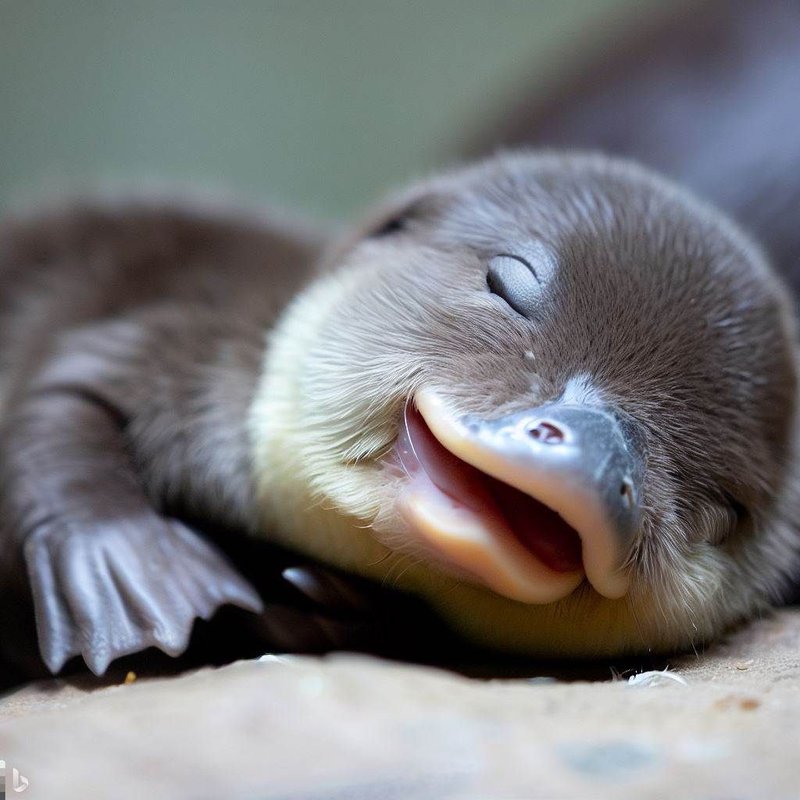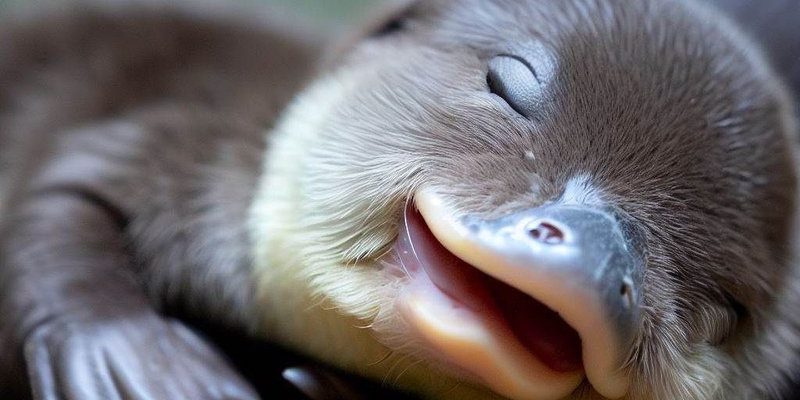
So, how do these incredible creatures manage to raise their babies in the wild? It all starts with their unique reproductive habits. The mother platypus lays eggs and then goes through a series of fascinating steps to ensure her little ones thrive. This article will delve into their nesting behaviors, what they feed their young, and how the little ones grow and learn in their watery world. Let’s explore the nurturing side of these extraordinary animals together!
The Nesting Process: Where Platypuses Call Home
When it comes to nesting, platypuses are somewhat secretive. They often choose riverbanks or areas near freshwater bodies as their nesting sites. The female digs a burrow that can be quite intricate, sometimes stretching several meters underground. This burrow not only provides a safe haven from predators but also protects the eggs from extreme weather conditions.
The mother platypus usually prepares her nursery shortly before laying her eggs. After carefully selecting the site, she creates a cozy, soft bed made of reeds, grasses, and other plant materials. This bedding keeps the eggs warm and secure. If you picture it, it’s like a mini plush castle beneath the earth, a perfect little home for her hatchlings.
Once the burrow is complete, she lays about one to three eggs, which she incubates for about ten days. During this time, she hardly leaves her nest. You might wonder how she eats or drinks; well, she has to rely on stored body fat since she’s fully committed to her little ones.
Egg Care: The Magic of Incubation
After laying her eggs, the mother platypus curls around them to keep them warm. This behavior is essential; without adequate warmth, the eggs won’t develop properly. Here’s the thing: platypuses are one of the only mammals that lay eggs, which makes their method of caring for their young unique. Incubation happens in this snug environment, where she can keep a close eye on them.
During those ten days, she uses her body heat to maintain the right temperature. If you think about it, it’s a bit like how some birds incubate their eggs—using their bodies as an incubator! In total darkness, she patiently waits for her eggs to hatch, relying on her instincts to protect and nurture them.
When the eggs finally hatch, the tiny platypus pups are born blind and helpless. They’re often compared to little jellybeans with fur—adorably, squishy, and completely dependent on their mother for survival!
Feeding the Young: Milk and More
Once the little ones hatch, the mother platypus begins to nurse them. But here’s the kicker: platypuses don’t have nipples like most mammals. Instead, they produce milk that seeps out through openings in their skin. This milk pools in the grooves of their belly, where the hungry pups lap it up. Can you imagine that? It’s like a little “platypus milk bar” right there on the mother!
Incredibly, the milk is rich in nutrients that help the young grow strong. The pups will nurse for about four to five months, gradually transitioning from milk to more solid food. So, what do they eat after weaning? They begin foraging for small invertebrates, like insects and crustaceans, as they learn to navigate their watery environment.
The mother’s milk helps the young develop not just physically but also provides the essential nutrients for brain growth. This is crucial, especially since the pups will soon need all their wits about them to thrive in the wild.
Learning to Swim: The Aquatic Adventure
Around the age of three to four months, the young platypuses start to venture outside the burrow. This is an exciting time because it’s when they begin learning to swim. Mother platypus helps by showing them how to dive and forage underwater. It’s like a little school of swimming lessons!
In the wild, swimming is a critical skill for survival. The pups are naturally curious, exploring their surroundings and mimicking their mother’s movements. You might picture them splashing around and practicing their dives, getting more confident every day. This is also a bonding time for the mother and her young.
Interestingly, platypus pups are known to stay with their mother until they are around six months old. This extended time helps them learn not just how to swim but also how to hunt and evade predators. It’s a crucial period that lays the foundation for their future independence.
Independence and Growing Up: Life Beyond the Nest
As the young platypuses grow, they slowly begin to gain independence. By the time they’re six months old, they are nearly ready to venture out on their own. This is a pivotal moment; they’ll leave the burrow to explore the waterways alone.
Before they go, the mother platypus teaches them important survival skills, like recognizing predators and finding food. It’s a bit like how human parents prepare their kids for the big wide world—lots of lessons packed into a short time! The young platypuses will now face challenges, from learning to hunt to avoiding becoming someone’s dinner.
Eventually, they break away from their mother’s care and start their own lives, marking a significant milestone in their development. You can imagine it as a sort of “platypus graduation,” where they take what they’ve learned and embark on their own adventures in the wild.
In conclusion, the way platypuses raise their young is as unique as the animals themselves. From digging elaborate burrows to nurturing their hatchlings without traditional mammal characteristics, every step of their parenting involves clever adaptations to survive in the wild. It’s a beautiful cycle of life that highlights the delicate balance between nurturing and independence.
So, the next time you think about these amazing creatures, remember the incredible journey of motherhood they embark on. Each baby platypus comes into the world under the care of a mother who has to balance instincts with survival strategies. It’s this blend of love and wildness that makes the story of platypus parenting truly one-of-a-kind.

